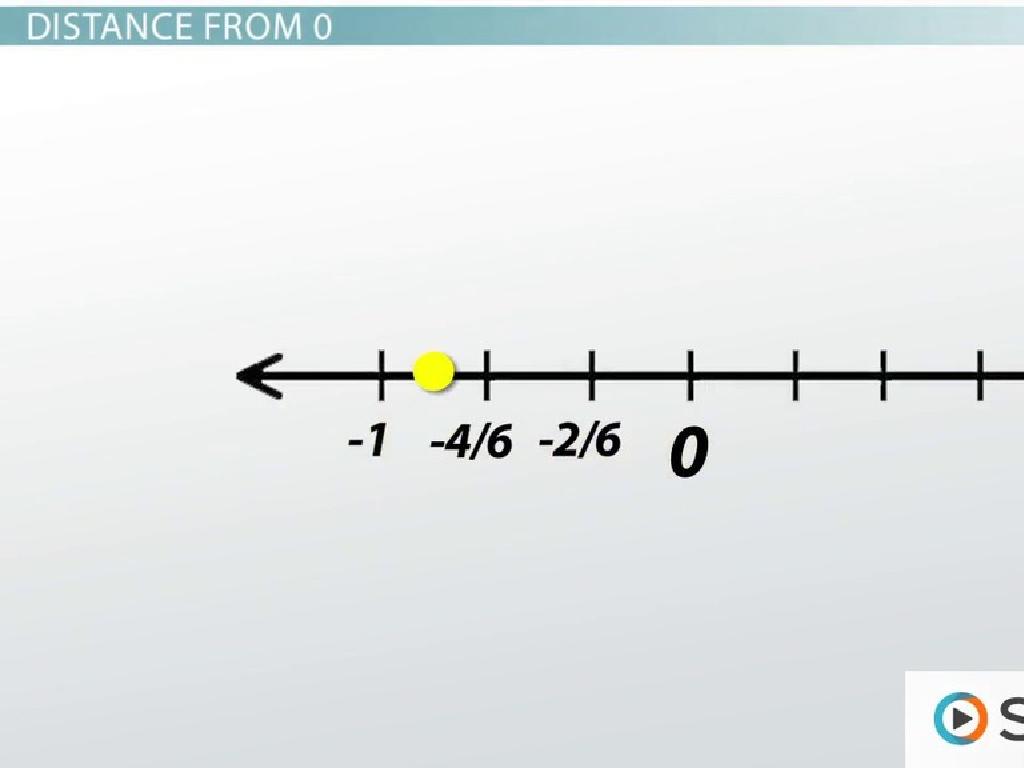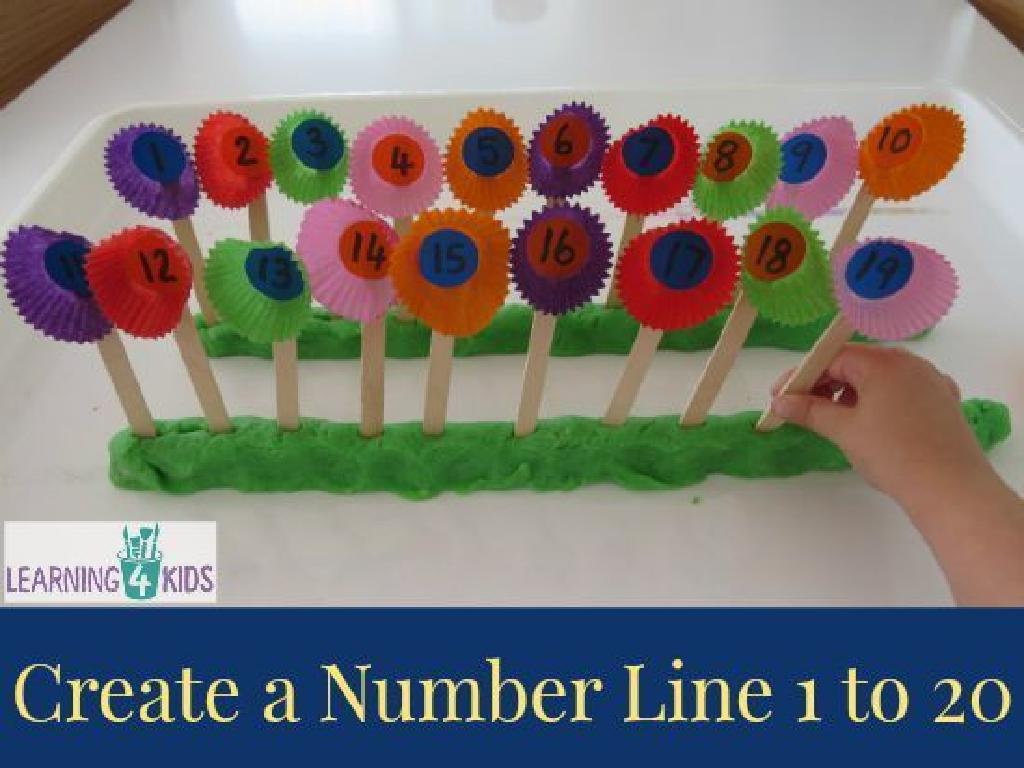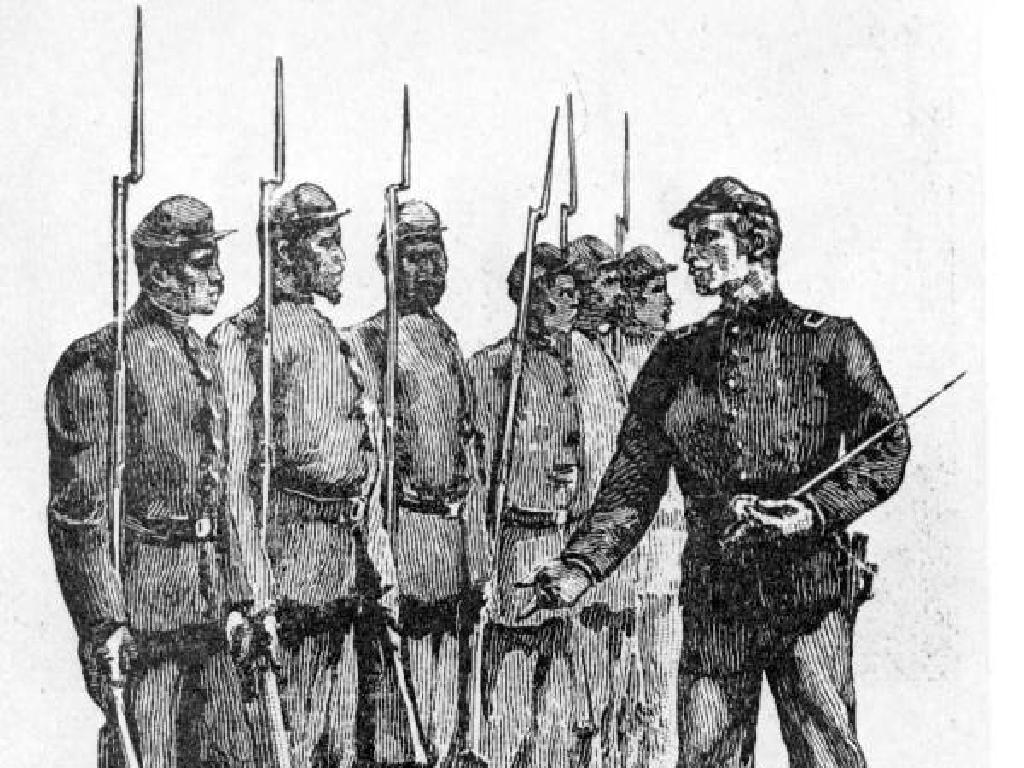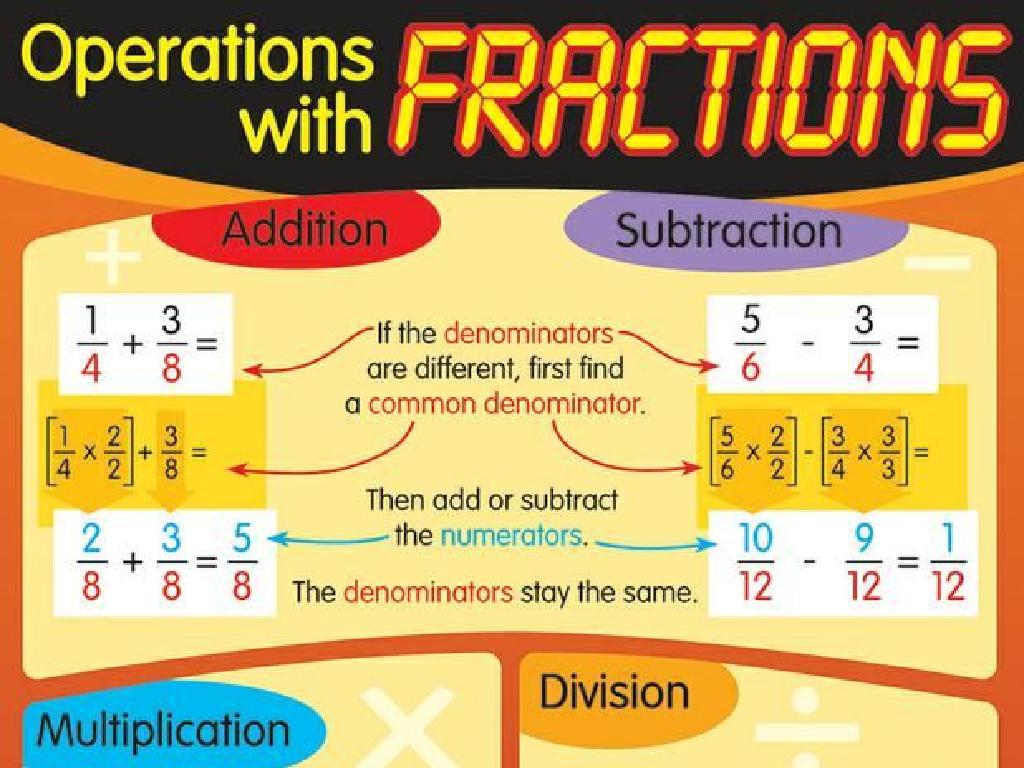Multiply Two Decimals: Where Does The Decimal Point Go?
Subject: Math
Grade: Sixth grade
Topic: Multiply And Divide Decimals
Please LOG IN to download the presentation. Access is available to registered users only.
View More Content
Multiplying Decimals: Getting Started
– Grasping the concept of decimals
– Decimals represent parts of a whole, like money.
– Multiplying: Combining quantities
– To multiply is to add a number to itself a certain number of times.
– Real-world application of decimal multiplication
– Used in finance, measurements, and more.
– Practice makes perfect
|
This slide introduces the concept of multiplying decimals, starting with a basic understanding of what decimals represent. Emphasize that decimals are not just numbers, but they represent parts of a whole, which is particularly important in everyday situations involving money or measurements. Explain that multiplication is a method of combining quantities, and when it comes to decimals, it’s a way of combining parts of a whole. Highlight the importance of this skill in real-life scenarios, such as calculating money, areas, and volumes. Encourage students to practice multiplying decimals to gain confidence and proficiency in this essential math skill.
Multiplying Decimals: Decimal Point Placement
– Review decimal place values
– Understand ones, tenths, hundredths, etc.
– Multiplication’s effect on place value
– Multiplying moves the decimal right
– Rules for decimal point in product
– Count total decimal places in factors
– Practice with examples
– Example: 0.5 x 0.2 = 0.10 (1 decimal place each)
|
Begin with a review of decimal place values to ensure students are comfortable with the concept of tenths, hundredths, and so on. Explain how multiplication can shift the place value, emphasizing that the decimal point is not fixed and can move. Introduce the rule for placing the decimal point in the product: count the total number of decimal places in the factors, and the product should have the same number. Provide several examples for students to practice, such as multiplying 0.5 (one decimal place) by 0.2 (one decimal place) to get a product of 0.10, which has two decimal places. Encourage students to work through problems and verify their answers with peers.
Multiplying Decimals: Placing the Decimal Point
– Multiply as whole numbers
– Count decimal places in factors
– If one number has 2 decimal places and the other has 1, count 2 + 1 = 3 places
– Place decimal in the product
– The product should have as many decimal places as the sum from step 2
– Practice with examples
– Example: 0.25 x 0.4. Multiply 25 x 4 to get 100, then place the decimal for 3 places to get 0.100
|
This slide guides students through the process of multiplying two decimal numbers. Start by having them ignore the decimals and multiply the numbers as if they were whole. Next, they count the total number of decimal places in the original factors. This step is crucial for placing the decimal point correctly in their final answer. For example, if the original numbers have three decimal places in total, the answer must also have three decimal places. Finish with practice examples to solidify their understanding. Encourage students to work through several problems and check their work by counting decimal places.
Multiplying Decimals: Placement of the Decimal Point
– Example 1: Single decimal place
– Multiply 0.5 by 3.2. Count decimal places in both, the answer has the same total count.
– Example 2: Varied decimal places
– 4.27 x 0.3. Add decimal places from both numbers to place the decimal in the product correctly.
– Example 3: Decimals with trailing zeros
– 0.600 x 2.5. Zeros after the decimal do count when determining the position of the decimal point in the answer.
|
This slide provides examples to help students understand the rules for placing the decimal point when multiplying decimals. Start with simpler examples and gradually introduce more complexity. For example 1, demonstrate that when both numbers have a single decimal place, the product will have a decimal point two places from the right. In example 2, show that when numbers have different decimal places, you add the number of places to find the correct spot for the decimal in the answer. Example 3 emphasizes that zeros following the decimal are significant in the count for the decimal placement. Encourage students to practice with additional problems and ensure they understand the concept of ‘total count of decimal places’ before moving on to more complex problems.
Multiplying Decimals: Practice Makes Perfect
– Let’s solve decimal problems together
– Discuss any challenges faced
– Share difficulties in placing the decimal or multiplying large numbers
– Learn tips for checking work
– Use estimation to verify answers; check with multiplication of whole numbers
– Practice makes us better!
|
This slide is aimed at providing students with the opportunity to apply their knowledge of multiplying decimals through practice problems. Encourage collaborative problem-solving and open discussion of any difficulties encountered during the process. Emphasize the importance of checking work by estimating and comparing the results with the multiplication of whole numbers without decimals. This will help students to self-validate their answers and understand the concept more deeply. Provide a variety of problems with different levels of complexity to cater to all students. The goal is to build confidence and proficiency in multiplying decimals.
Class Activity: Decimal Multiplication Race
– Split into small groups
– Receive decimal multiplication set
– Each set contains various problems to solve
– Complete problems accurately
– Focus on placing the decimal correctly
– First group to finish wins
|
This activity is designed to encourage teamwork and reinforce the concept of multiplying decimals. Divide the class into small groups, ensuring a mix of abilities in each. Provide each group with a set of decimal multiplication problems that vary in difficulty. Emphasize the importance of accuracy, especially the placement of the decimal point in the product. The first group to correctly complete all problems wins a small reward. Possible activities for differentiation: 1) Easier sets for groups needing more support, 2) Timed challenges for advanced groups, 3) Peer teaching where winners explain strategies, 4) Individual follow-up problems for early finishers, 5) Use of manipulatives or visual aids for groups needing a concrete understanding.
Conclusion: Mastering Decimal Multiplication
– Recap multiplying decimals
– Line up the numbers, ignore the decimals, multiply, then place the decimal
– Practice is key to mastery
– Regular practice solidifies understanding and speed
– Homework for extra practice
– Solve problems in the homework set to reinforce today’s lesson
|
This slide aims to summarize the lesson and emphasize the importance of practice in mastering the multiplication of decimals. Start by recapping the steps: align the numbers regardless of the decimal point, multiply as with whole numbers, and then place the decimal point in the product. Stress that consistent practice is crucial for students to become proficient. For homework, assign a set of problems that cover a range of difficulties to ensure students apply what they’ve learned. The homework will also serve as a diagnostic tool to identify areas where students may need further clarification or assistance.

-a-solution-to-the-linear-equation/linear_equation_graph_solutions.png)




